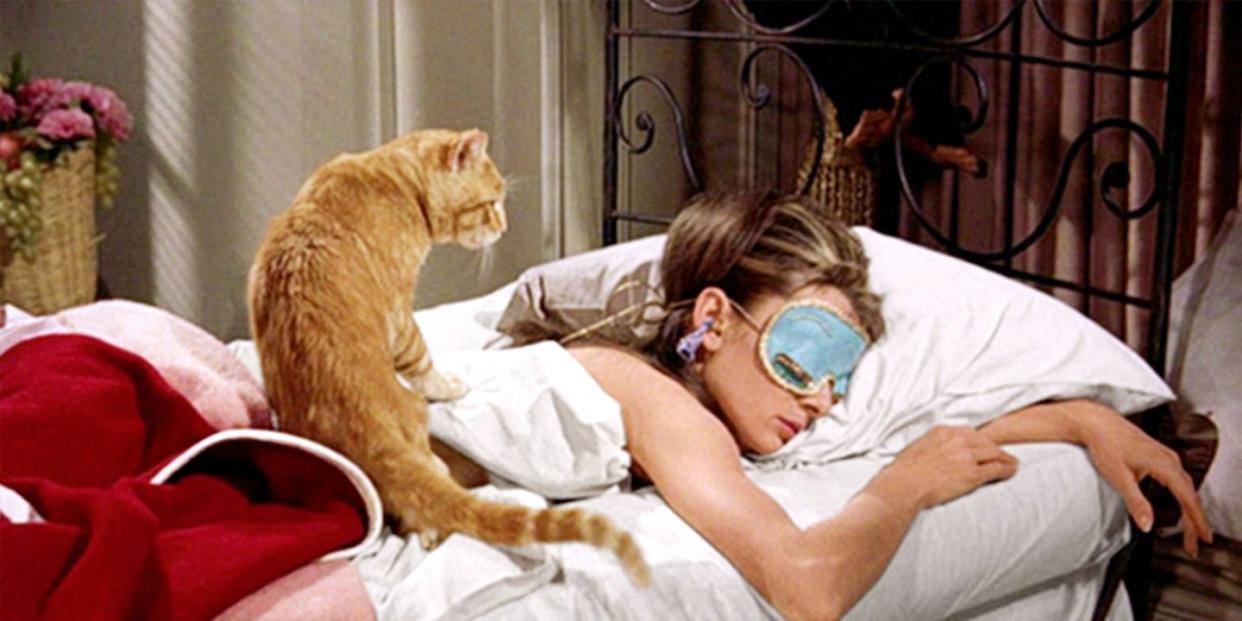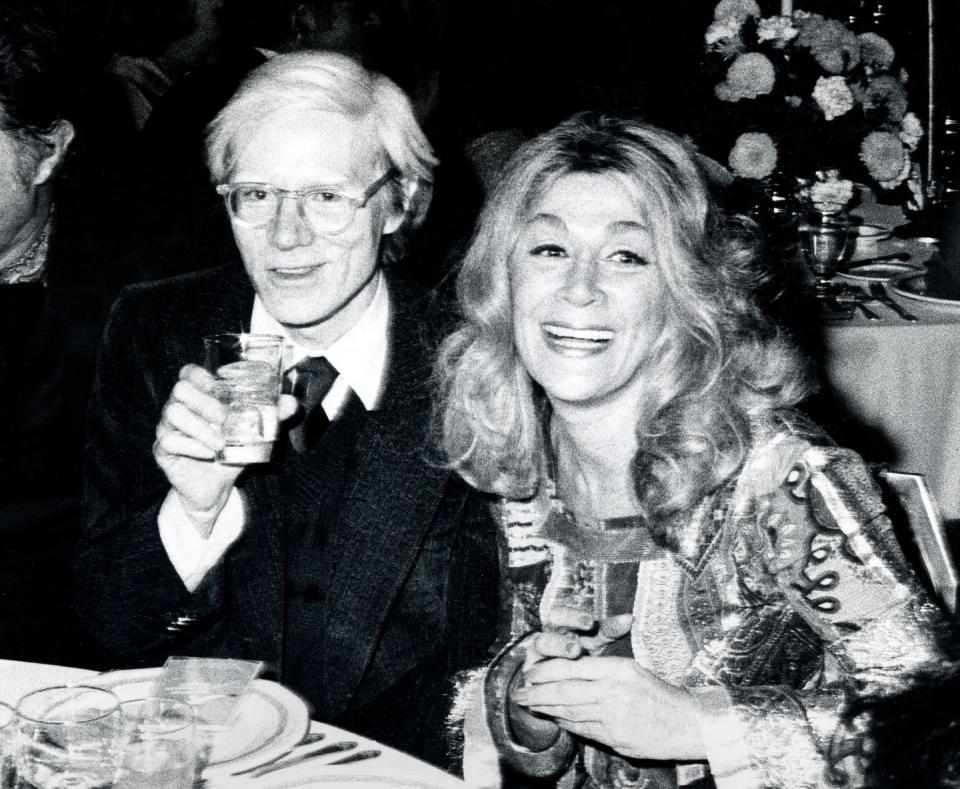Have We Overdosed on Fun?

- Oops!Something went wrong.Please try again later.
One punishingly rainy October evening, at the Fashion Group International’s Night of Stars awards dinner, Prabal Gurung addressed several hundred stylish guests in the ballroom of Casa Cipriani. Deepak Chopra, Dionne Warwick, Iman, and Huma Abedin were among them. “I thought about not showing up tonight and saying I had Covid,” the designer said. (It might have been a better option, considering that midway into his heartfelt acceptance speech someone in the sound booth cut his microphone and turned up the music to play him off.)
Ah, the hazards of leaving the couch, as we all seem to be doing with alarming frequency these days. If half of life, as the saying goes, is about showing up, then it would seem we’re overcommitted to the idea right now. It’s suddenly yes and yes and yes to any and all invitations. You can, of course, risk catching the latest variant, but perhaps the biggest risk of our collective decision to go back to living our lives is overexposure—and not to viruses.
Exhibit A: Eric Adams, New York’s out-and-about mayor, who is too often spotted at downtown’s hot private club Zero Bond. “People thought this city was a 9-to-5 city,” the New York Post reported him saying at a party to kick off Fashion Week in September. “And all of a sudden January 2022 comes about and the mayor comes in and says he’s the nightlife mayor.”
It didn’t take long for the eyebrows to rise and knives to come out. “He should stay in and do his job,” says Kendall Werts, a founder of the talent agency the Jeffries. “When you’re truly powerful the people should come to you.”
“Stay at your desk, please,” adds Ann Dexter-Jones, a jeweler and popular party guest.
“This is a city that never sleeps, so the mayor should not be taking a nap,” Adams said in his defense when Chris Wallace later asked him if, given the city’s troubles, he might tone it down.
The mayor isn’t alone. Social deprivation during Covid left us starving to go out post-vaccine. And it dovetailed with the idea that it was a civic duty to support those industries that had suffered so dramatically in 2020. “Going to restaurants and bars and the theater—it became seen as almost a form of philanthropy,” says one New-Yorker-about-town whose datebook is at least as full as the mayor’s. Soon after that, brands began dipping into years’ worth of untapped marketing budgets, once again throwing ambitious events and holiday parties. And despite all our Covid-era talk of pandemic silver linings, including the idea that we can slow down, appreciate the little moments, and stop succumbing to constant FOMO, these post-pandemic phenomena swirled together until we found ourselves spinning in a social cyclotron. “We’re doubling down on our plans like slightly irresponsible and defiant children,” says Tony Marion, the Broadway-producer-about-town.

Or does it only seem that way, because we’re older and more tired than we were three years ago? Then again, someone like Houston grande dame Lynn Wyatt has barely slowed down over her eight-plus decades. She says the trick is to pick and choose parties in advance so that you never cancel at the last minute. She also operates on the theory that it’s okay to show up, stay for a little while, then leave, as her late friend Nan Kempner often did in New York.
Billy Farrell, the party photographer whose website, BFA, serves as a kind of data amalgamator of the socially overexposed—it lists the number of pictures in which a particular person appears out on the town—notes that it’s also much easier now, with social media, for people to appear to be partying the night away at seven different locations but actually be under the covers by 9 p.m. “With overexposure, as with everything else, you have to understand context,” Farrell says. When he started snapping pictures 20 years ago, being a social butterfly took a lot more work, and only the truly committed could claim the title. “If you were Tinsley Mortimer in 2003, you had to actually go out to be validated by society,” Farrell told me. “You had to work for it by buying an outfit and a ticket to a benefit, then get dressed, get a driver, and travel to an event, where you actually had to talk to people.”
Pre-Tinsley, original party gangsters included Warhol actress Sylvia Miles and writer Anthony Haden-Guest. (Along with publisher Morgan Entrekin and author Carl Bernstein, Haden-Guest was featured in Spy magazine’s Celebrity Pro-Am Ironman Nightlife Decathlon.) But now it’s a way of life for many of us. “If I want people to come to my events, I have to go to theirs,” says Jean Shafiroff, who is on eight charity boards. “And while it’s nice to stay home once in a while, I genuinely like seeing people.”
Candace Bushnell seconds the sentiment. “In New York, it just makes me happy to run into people, and who wouldn’t want that after a pandemic?” the author says.
For Waris Ahluwalia, the designer and actor, his pandemic pause in the Catskills made him reconsider his life as one of the most photographed party presences in the city. With 3,268 pictures on BFA, he is a textbook case of being famous for being famous. “People asked if it was hard not to go out, and I told them no, it was great to put the brakes on,” he says. Unlike those who are back swimming laps in the party pool, he remains in sabbatical mode (although he made an appearance for the big October opening of a store in the West Village hosted by Sabyasachi Mukherjee, India’s Ralph Lauren, where Ahluwalia was welcomed by photographers like a long-lost son).
The mad rush to overcirculate is hardly surprising given all that time on Zoom and in sweatpants. But one has to wonder if perhaps absence made the heart grow fonder, and we collectively recall our pre-pandemic nights out as a bit more titillating than they actually were. Are we now doomed to go out night after night, trying to recapture something and feeling perpetually underwhelmed?
Well, not all of us. Some notable personalities are reveling more than ever in their antisocial tendencies, much to the delight of those of us feeling perpetually exhausted. “So nice to be able to hide in my house on the weekend by choice again,” the TV writer and beloved Instagram curmudgeon Gary Janetti recently posted. And a few weeks later: “I had a great weekend. I didn’t see anyone I know.”
“Like everything else in life,” said George Christy, who reported on the Hollywood party scene for decades, “going out is all about editing.” Without it, one risks becoming jaded or bored by even the truly special evenings.
Dialing it back, though, is easier said than done. The pros know that exiling yourself to your weekend home, as Bushnell does after too many multifunction evenings, is the best strategy. Lynn Wyatt, with a family ranch near Laredo that has its own airstrip, does the same thing. But, like many of the most dedicated and energetic social animals, she bristles at the suggestion that she may be out too much in the first place.
“I would not say I’m overexposed,” she says. “Just grateful to be invited.”
This story appears in the December 2022/January 2023 issue of Town & Country. SUBSCRIBE NOW
You Might Also Like

